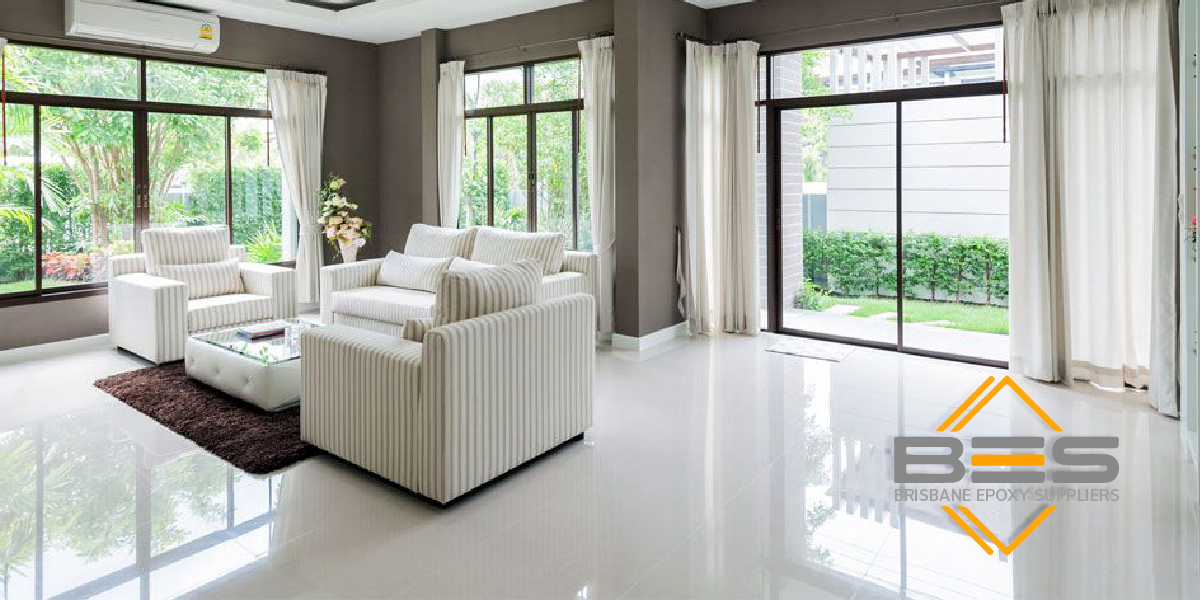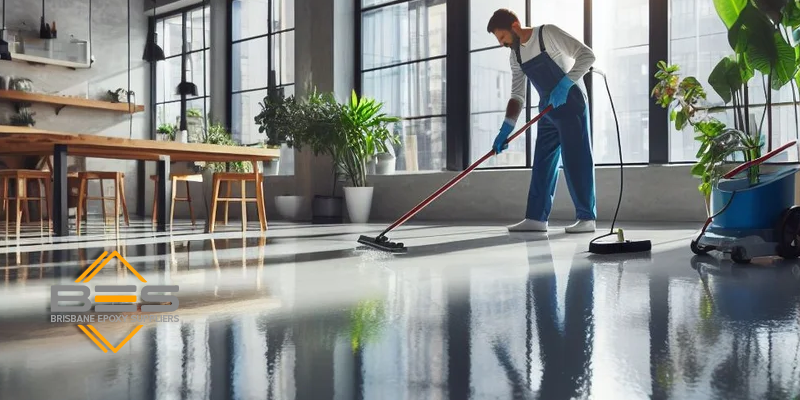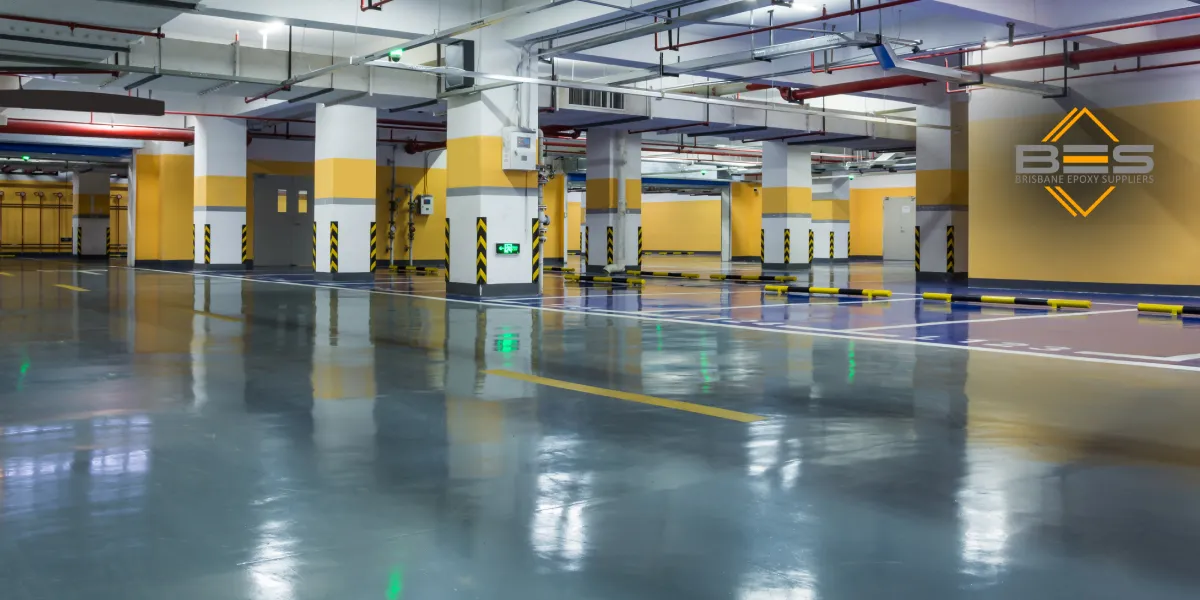Epoxy Flooring for Living Room: Transform Your Space with Durability, Style, and Easy Maintenance

Epoxy flooring living room, is it even possible? Of course! Epoxy floors are durable and versatile. Therefore, they have gained popularity in residential buildings. It doesn’t matter if it’s your garage floor or living room, epoxy is the most suitable and cost-effective choice. Particularly in living rooms, they offer a modern and unique appearance that stands the test of time.
Here, we will explore the benefits of epoxy flooring living room, the necessary tools and materials for application, safety precautions, and cost considerations. Stay tuned!
What is Epoxy Flooring?
Epoxy flooring consists of two main components: epoxy resin and polyamine hardener. When these two components mix, they create a strong, long-lasting surface that is resistant to wear and tear. We usually apply multiple layers of epoxy resin to a prepared floor base to form a durable surface.
Why Choose Epoxy Flooring for Your Living Room?
Originally, we used epoxy flooring for industrial and commercial settings. These days, epoxy has made its way into homes, particularly in living rooms, offering a modern and sleek appearance. Here is a complete list of benefits of epoxy flooring in a living room that will amaze you!
1- Epoxy Floors Are Highly Durable
Epoxy floors are durable and last for years to come. That’s why homeowners prefer to use epoxy flooring in their living rooms. Since epoxy creates a hard, resilient surface, therefore, it can easily withstand heavy foot traffic, furniture movement, and everyday wear and tear in the living room.
Epoxy floors don’t chip, crack, or peel easily, unlike traditional flooring. Therefore, it maintains its appearance for years.
2- Epoxy Floors Enhance Aesthetics
Imagine there’s a whole world of colors, patterns, and finishes in front of you, and you can customize your living room’s look by choosing the most suitable epoxy floor! That would be awesome!
It doesn’t matter if you prefer a high-gloss finish that reflects light and enhances the room’s brightness or a matte finish for a more subdued, elegant appearance, epoxy flooring has it all. Everything can be tailored to match your interior design preferences.
3- They Are Easy to Maintain
If you don’t have enough time to clean your living room, here’s some good news for you. Epoxy floors are incredibly easy to clean and maintain. With epoxy floors, you don’t have to worry about accumulating dirt, dust, and debris in cracks or crevices. Epoxy floors offer you a seamless surface.
In addition, epoxy floors are resistant to stains and spills. Therefore, they are an ideal choice for households with pets or young children.
4- Epoxy Floors Are Eco-Friendly
When you apply epoxy floors over existing floors, you significantly reduce the need for new materials and destroy the existing floor. This way, you reduce the environmental impact. In addition, epoxy floors last longer and reduce the need for repairing or changing the floor.
Cost Considerations for Epoxy Flooring in Living Rooms
When choosing epoxy flooring for living rooms, you have to be aware of the costs. At first, it seems that epoxy flooring might have a higher initial price, but the long-term benefits make epoxy flooring a worthwhile investment. Since epoxy flooring in living rooms is durable and visually appealing, it often justifies the cost in the long run. The cost of applying epoxy flooring in living rooms can vary based on several factors. Here is a complete list of varieties.
Size of the Living Room: The size of the living room will significantly influence the cost. The larger the area, the higher the cost! Since larger areas will require more materials and labor, therefore, the total cost will increase.
Type of Epoxy: The kind of epoxy that you choose will affect the final cost. Solid epoxy, water-based epoxy, or solvent-based epoxy? Solid epoxy is considered the most expensive one, but it offers the highest quality and durability.
Customization and Design: The cost of custom designs like metallic finishes or embedded patterns will be more than that of a simple design. If you are worried about the expenses, it’s better to choose simple, single-colored epoxy floors.
Surface Preparation: The condition of the existing floor will affect the final cost. You need to prepare the floor before applying the epoxy. If the floor requires extensive grinding or repair, this will increase the overall expenses.
Necessary Tools and Materials for Applying Epoxy Floors
Now that you’ve decided to use epoxy flooring for your living room, you need to prepare all the necessary materials and tools to get the job done.
Here is a list of necessary tools and materials for applying epoxy flooring in your living room:
Epoxy roller or squeegee: We use this to apply the epoxy coating evenly on the surface.
Paint brush: We also use this tool to apply epoxy on the corners and edges.
Other necessary tools are as follows:
After preparing these tools, you need to gather all the necessary materials to start the work. Here is a complete list of crucial materials to begin your DIY project.
Epoxy resin and hardener: These are the most important and basic materials. You have to mix these two to form a solid surface.
Safety Precautions to Consider When Applying Epoxy Flooring Living Room
When applying epoxy flooring in the living room, you have to consider safety precautions. These precautions will help you get the work done properly.
First of all, you have to make sure that the area is well-ventilated during application, as epoxy fumes can be harmful if inhaled. The main danger is at the time of mixing epoxy resin and hardener. After curing, the epoxy floor is harmless.
Also, remember that you have to wear gloves, safety goggles, and a respirator to protect yourself from harmful fumes when mixing and applying epoxy resin.
In addition, preparing the concrete surface properly will prevent problems with adhesion, which can compromise the durability of the floor. Remember that, if you want your epoxy floors to be in top condition and last for years to come, the application process should be done in conditions where temperature and humidity are within recommended ranges.
How to Maintain Epoxy Flooring Living Room?
Epoxy flooring is an excellent and unique choice for your living room, as it offers a perfect blend of durability, style, and ease of maintenance. Only with proper installation and care, epoxy flooring can change your living room in no time. Here’s how you can maintain your epoxy flooring living room.
- Regular Cleaning: Sweeping and mopping the floor regularly, once or twice a week, will help you to remove dirt and debris from the floor and keep a shiny floor.
- No Harsh Chemicals: In order to prevent damaging the epoxy finish, you should always use mild detergents when cleaning the floor. Harsh chemicals and cleaning detergents will damage the surface slowly.
- Use Protective Pads: If you want to prevent scratches on the surface, it’s better to use protective pads under furniture legs. This way, sudden movements of furniture won’t scratch the surface.
- Cleanup Spill: For a shining and glossy epoxy flooring living room’s appearance, it’s best to clean spills immediately. Although epoxy is stain-resistant, you shouldn’t let spills remain long on the surface.
- Regular Inspection: In order to extend the floor’s lifespan, inspect the floor on a regular basis to make sure that there’s no sign of wear or damage. If there was any damage on the surface, address issues promptly.
- Door Mats: Using door mats at entryways significantly reduces the amount of dirt, gravel, and debris brought onto the floor. This way, you can minimize potential scratching or wear from dirt.
Epoxy Flooring Living Room: The Best Choice?
Do you prefer a sleek, minimalist look or a floor that mimics the appearance of polished concrete or marble? Epoxy floors can deliver them all! If you want your living room to stand out from the crowd, you can easily add metallic pigments, flakes, or even 3D patterns. Enjoy your lively living room, but make sure to provide high-quality epoxy supplies, which play an important role for the best result you want.
Conclusion
In conclusion, epoxy flooring living room is a fantastic choice if you’re looking for a durable, stylish, and easy-to-maintain flooring solution. With its wide range of design options and long-lasting performance, epoxy flooring is the perfect way to elevate the aesthetic of your living room while ensuring it withstands everyday wear and tear. Whether you’re aiming for a sleek, modern look or a more classic design, epoxy flooring living room provides the versatility and resilience you need to create a beautiful and functional space.















